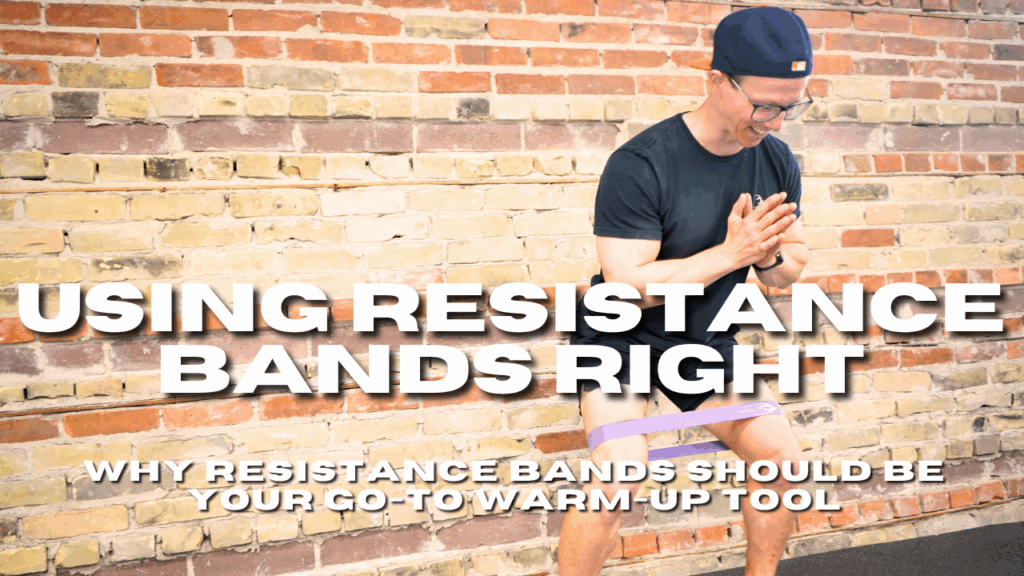
In the fitness industry the overlooks general fitness, high performance training, and health, warming up is one of the most neglected yet crucial aspects of training. And no, we’re not talking about a few minutes on the treadmill or half-hearted arm swings. A proper warm-up prepares the body—and the mind—for high-quality movement.
So why resistance bands?
These lightweight, inexpensive, and portable tools pack a powerful punch when used strategically. They’re no longer just for physiotherapy clinics or Instagram influencers—they’re a staple in high-performance training facilities and are used by professional athletes, coaches, and therapists around the world.
Let’s break down exactly why resistance bands should be your go-to warm-up tool and how they outperform many traditional methods.
1. They Prime Your Muscles for Action
One of the most important goals of a warm-up is to activate the right muscles. Too often, people jump into heavy compound lifts or high-speed drills without ensuring their stabilizers and prime movers are firing properly. This is where bands shine.
By adding light resistance to movement patterns like squats, hip hinges, and pulls, you stimulate the neuromuscular system—meaning your brain and muscles connect more effectively. This improves technique, coordination, and overall movement quality (Behm & Chaouachi, 2011).
For example:
- Banded lateral walks engage the glute medius, which is crucial for knee stability.
- Banded face pulls activate the lower traps and rotator cuff muscles to prep your shoulders for pressing.
2. They Enhance Joint Mobility
Mobility is about more than flexibility—it’s about control through a full range of motion. Resistance bands allow you to move dynamically while applying tension that encourages deeper, safer ranges of motion.
Movements like banded shoulder dislocates or anchored hip distractions help you:
- Improve joint centration
- Reduce passive stiffness
- Mobilize tissue with resistance
This combination of active stretching and resistance helps the body open up safely and effectively before training (Andrade et al., 2015).
3. They Reduce Injury Risk
Warm-ups that involve light, targeted resistance are superior to passive stretching alone in reducing injury risk (McCrary et al., 2015). Resistance band work increases blood flow, improves tissue temperature, and activates stabilizer muscles that protect joints under load.
Imagine jumping into deadlifts without first activating your glutes or preparing your lumbar spine. That’s a recipe for strain. A few minutes of banded glute bridges or good mornings can change that entirely.
Plus, bands are easy to scale—making them perfect for everyone from beginners to advanced lifters.
4. They Improve Movement Quality
Bands offer directional resistance, which can clean up common movement errors. For example:
- A band around the knees during squats can cue proper knee tracking.
- A band anchored to the side during core drills can challenge anti-rotation and stability.
These movement prep drills make your body more aware, more responsive, and more resilient during your main training session. They train you to move with intention—not just momentum.
5. They’re Incredibly Convenient
Unlike foam rollers, machines, or dynamic warm-up circuits that require a lot of space or equipment, bands fit in your bag and can be used anywhere.
Traveling? No problem. Training at home? Easy. Short on time? Grab a band and go.
They’re a versatile, low-barrier tool to get your body moving, whether you’re warming up for a heavy lift, a game, or a long run.
Final Thoughts: It’s Time to Upgrade Your Warm-Up
Your warm-up should be more than an afterthought. It’s your first opportunity to connect with your body and prime your performance.
Using resistance bands as part of your routine helps you activate, mobilize, and stabilize in a way that’s dynamic, purposeful, and specific to your training goals.
In the next blog, we’ll explore how elite athletes and recreational exercisers alike are using resistance bands to train smarter—not harder.
Ready to move better? Start with the band.
References:
Andrade, R. J., Freitas, S. R., Vaz, J. R., Bruno, P. M., Pezarat-Correia, P., & Martins, J. (2015). Stretching with and without tendon vibration: Effects on ankle dorsiflexion range of motion and muscle stiffness. Scandinavian Journal of Medicine & Science in Sports, 25(6), e547-e554.
Behm, D. G., & Chaouachi, A. (2011). A review of the acute effects of static and dynamic stretching on performance. European Journal of Applied Physiology, 111(11), 2633–2651.
McCrary, J. M., Ackermann, B. J., & Halaki, M. (2015). A systematic review of the effects of upper body warm-up on performance and injury. British Journal of Sports Medicine, 49(14), 935-942.